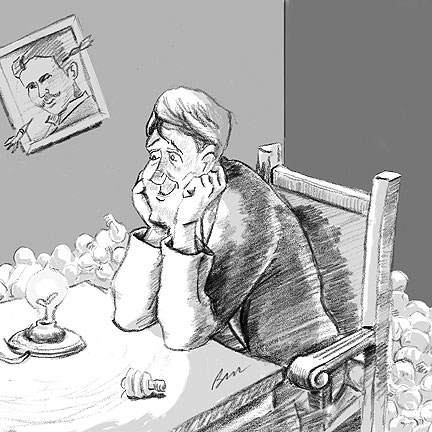Illustration: Bruce Crilly
Have you heard of the Butterfly Effect? It’s a chaos theory-based rubric attributed to Edward Lorenz for explaining the sensitivity of the dependence on initial conditions relative to widely dispersed outcomes. The theory is expressed in the saying “the flap of a butterfly’s wings in Thailand can set off a tornado in Texas.”
Okay, so what does that have to do with marketing, especially for small to midsized companies? If you drill down into the Butterfly Effect statement, you learn that small, seemingly insignificant actions can, in time and to a great degree, affect or evolve into great, often extraordinary results not easily conceived in context of the original event. And conversely, you see that the auspices of great outcomes can be found to have relatively benign provenance.
In marketing, we’re often overcome trying to “think big” and “make it rain” and “blow it out,” and a zillion other clichés of bigness. The truth, however, is that we can sometimes reach these astonishing aims by applying the Butterfly Effect and initiating small actions and – this is the key – setting them on the right course.
Here’s a simple viral marketing example: you put a status up on Facebook, for instance, and tell 10 of your friends to pass it to ten of their friends, and so on. Perhaps you’re promoting a secret concert of a popular band. How many times does this have to be passed on for your initial (small) action to have a great effect? In just four repeats of your original action (tell ten friends,) you have 100,000 screaming fans show up at the concert. Uh oh – only 20,000 seats! So, sure, there’s very little chaos there. But you can see how quickly simple actions can scale outward to a great degree.
Social media is really the Butterfly Effect in action in today’s marketing world. Brands are seeding conversations, and then setting them off into the ether. And in an extremely democratic (and sometimes terrifying) manner, the brand is weaved into conversations by people, and expanded, and turned into recipes or planking videos or mashups or hashtags. Who knows? It’s chaos, but it’s usually good for the brand. Sometimes (see AdFreak’s recent post on ChapStick’s social debacle,) it’s not so much.
One last point. It doesn’t have to be social media. You can start generating big marketing effects through small actions in lots of ways. It could be a new merchandising program, a refresh of your menu, seeking new talent, or adopting a cause, or a new partnership, or a next blog post. It could be anything. But it has to be something and it has to be started.
A few keys to applying the Butterfly Effect:
Chaos. An important aspect of all of this is that it’s painfully hard for mere mortals to calculate chaos. [An easy task for a math-head. Not for me.] So it’s easy to imagine outcomes that are too likely. The Butterfly Effect is constantly evolving, ever shifting and morphing into outcomes that, while predicated on the action before it, often do not travel a predictive pathway. Get with that.
Direction. Don’t think about the outcome, because you often have little or no control over it. Just ensure that the initiating action is set off in the right direction, is well-intentioned and is aligned with your brand values. The rest is the market’s work, with all its environmental and evolutionary vagaries. Indeed, the chaos is part of the fun of watching this theory in action.
Distance (whether it’s measured in time or space) is a necessary factor. You can’t expect these great things to happen in sixteen minutes. Be patient, and integrate the Butterfly Effect along with your other, more urgent, plans. If you launch a rocket in the air, and then measure its effectiveness in six seconds, you’ve failed to reach the stars. Measure again in four hours, and you’re dancing among them.
How does this apply to your brand? What can you START today? What ten things can you start today? Even if it’s a small but pertinent action that can evolve, it’s probably worth it. So start flapping.

